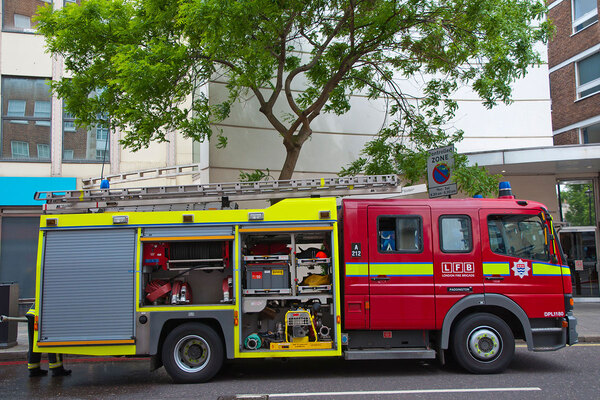Widely used polystyrene insulation system shown to be ‘similar’ to Grenfell-style cladding in Australian fire test
A widely used polystyrene insulation system that the UK government has previously refused to test has performed in a similar way to the system installed on Grenfell Tower when tested in Australia.
The Victorian Building Authority released the results of a test of a rendered system comprising expanded polystyrene (EPS) insulation today.
Minutes obtained by Inside Housing in 2019 showed that the UK government had previously refused the direct request of London boroughs to add this system to its post-Grenfell testing regime.
The government has proceeded on the basis that aluminium composite material (ACM) panels, as used on Grenfell, should be treated as a unique threat.
But today’s test report suggested that the two systems “should be given the same risk ranking”.
There are believed to be hundreds of high and medium-rise buildings that have rendered EPS systems in the UK, many of which are awaiting remediation.
The test in Victoria, Australia, was carried out on a mock system utilising a 5mm render board and 100mm-thick polystyrene, which was fixed to a timber frame cavity.
The report released by the Commonwealth Scientific and Industrial Research Organisation (an Australian government research agency commissioned to do the testing) said that the test provides “clear test-based evidence” that the system will result in “vertical fire spread and pool fires” when exposed to a large fire source.
It added that this was “similar to that of [polyethylene-cored ACM]” and that the two systems should be given “the same risk ranking… when undertaking preliminary building risk assessments”.
A government taskforce in Victoria is currently undertaking the remediation of around 500 higher-risk buildings – primarily those with EPS and ACM cladding systems.
The testing was carried out on a non-load-bearing steel frame, in accordance with BS 8414 part 2 – a testing standard that applies in UK building regulations.
It failed when measured against Australian standards because of a “significant pool fire” of molten insulation and flame that spread above the top of the rig. Only the second of these would be relevant under the UK testing standard.
But the large pool of burning plastic suggests a risk that a fire in an EPS-clad block could spread down a building as well as up.
The fire spread to the top of the system within eight minutes and the one-hour test had to be extinguished after just 12 minutes.
“If the system had been installed to a taller wall with more levels, the fire would have continued to spread to all levels above,” the report said.
“The system resulted in flaming molten EPS forming a large pool fire at ground level. This indicated that the system would be prone to downward fire spread to the base of the wall, balconies or other horizontal projections located below the level of fire origin.”
The report ran a direct comparison with the post-Grenfell fire tests carried out by the Building Research Establishment in the UK and concluded that temperature monitors exceeded the 600 degree celsius threshold at a similar time. Flames also took a similar amount of time to reach the top of the rig.
“Based on the above, it can be concluded that, although the rendered EPS and [ACM] wall systems are constructed of significantly different products/materials the propensity for rapid fire spread when exposed to a large fire source is similar,” the report said.
The government refused to test EPS systems in September 2019 when asked by London boroughs because “we know they are flammable”, minutes obtained by Inside Housing show.
However, government ministers have repeatedly said that ACM systems are more dangerous.
As a result, while there is direct government funding for all ACM cladding removal, EPS systems are required to compete with other non-ACM products for extremely limited additional removal funding.
Dr Jonathan Evans, chief executive of building envelope firm Ash & Lacy, told Inside Housing: “This calls into question the guidance that’s been given and clearly shows these materials have the capacity to spread fire. These systems are extremely common; the vast majority of rendered systems are EPS-backed.”
Update: at 6.05pm, 11.12.2020
A previous version of this article referred to extruded rather than expanded polystyrene. This was corrected.
Sign up for our fire safety newsletter
Already have an account? Click here to manage your newsletters












